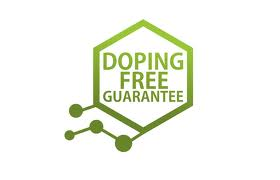 The UCI’s biological passport is an individual electronic document where the results of anti-doping tests carried out on a rider are registered on a regular basis. The biological passport contains information about direct test results (blood and urine), and both the rider’s hematological and steroid profiles (indirect tests).
The UCI’s biological passport is an individual electronic document where the results of anti-doping tests carried out on a rider are registered on a regular basis. The biological passport contains information about direct test results (blood and urine), and both the rider’s hematological and steroid profiles (indirect tests).
Before its existence, anti-doping detection was based only in direct methods – analysis of blood and urine samples with the aim of detecting prohibited substances and/or to prove evidence of other type of illegal doping methods (for example, blood transfusions) – and a rider would only be sanctioned if the maximum limits of a certain substance or other illegal doping procedure were surpassed and/or detected.
Before the beginning of the 2008 season UCI introduced in this passport a ‘blood module’ that was a major improvement for the efficiency of the passport and gained renewed importance in 2010 when drugs such as EPO and anabolic steroids with the same molecular structure of those produced endogenously by the human body were (unfortunately) made available.
Indirect detection methods are much more efficient than direct ones since the effects of using banned substances remain and can be detected for longer periods than the ones in which it is possible to discover traces of the substances in the rider’s body. The biological passport uses the most advanced scientific and statistical tools developed by forensic science specialists to analyse the results and to withdraw conclusions of illegal actions.
The hematological profile relies on a battery of tests ran over each rider’s blood that allow then a profile to be drawn and individual limits to be established. Along the season, regular blood samples are taken and compared with the rider’s own individual “normal” hematological levels. If any significant variations exist, then this could be considered as an indirect detection of doping, such as, for instance, blood manipulation (for example, whether EPO has been taken).
The definition of the steroid profile is made accordingly with the same principles of the hematological one. However, in this case with the matrix of analysis are urine samples. The steroid profile allows the indirect identification of exogenous steroids in the athletes’ organism (for example testosterone) even if the legal thresholds haven’t been breached.
Individual hematological and steroid profiles allow the permanent monitoring of variations in a rider’s biological parameters. Abnormal variations can be considered as proof of doping, even if no limit has been exceeded, as exemplified in the following UCI’s Diagram:
The biological passport is applicable to all riders from UCI Pro-Teams and UCI Professional Continental Teams with wild card status, as well to those from any other team that wishes to be involved. Since then, several riders of the main UCI’s peloton teams have been sanctioned upon the basis of the biological passport (usually a two-year ban).
For more detailed information check the UCI’s official document on:
http://www.uci.ch/88C835D9-0062-4603-B83D-07D1F44548FF/FinalDownload/DownloadId-FF8A0704745AC6208FB26702715A875B/88C835D9-0062-4603-B83D-07D1F44548FF/Modules/BUILTIN/getObject.asp?MenuId=MjI0NQ&ObjTypeCode=FILE&type=FILE&id=NDY4MjA&LangId=1




